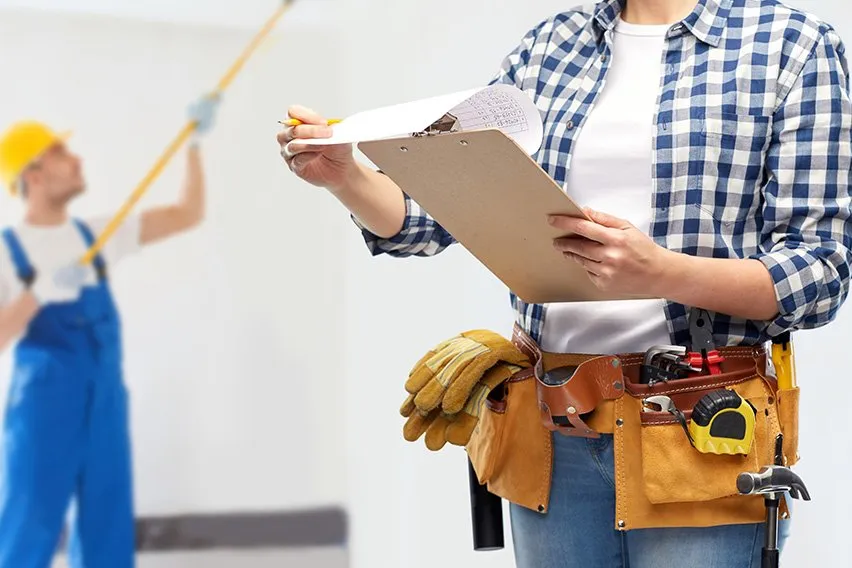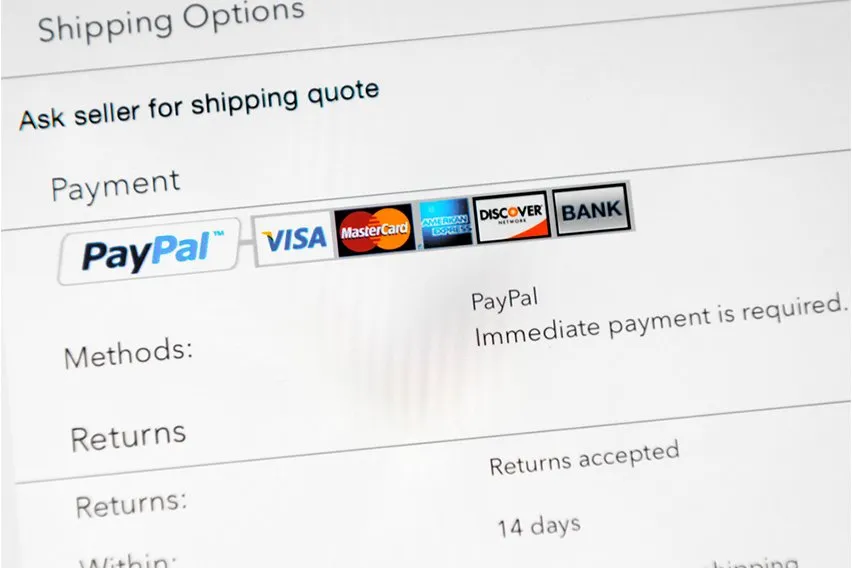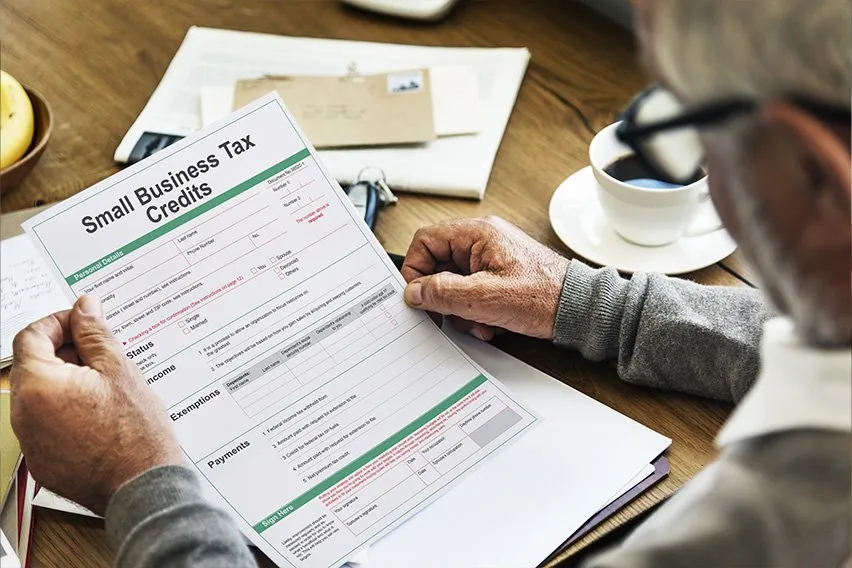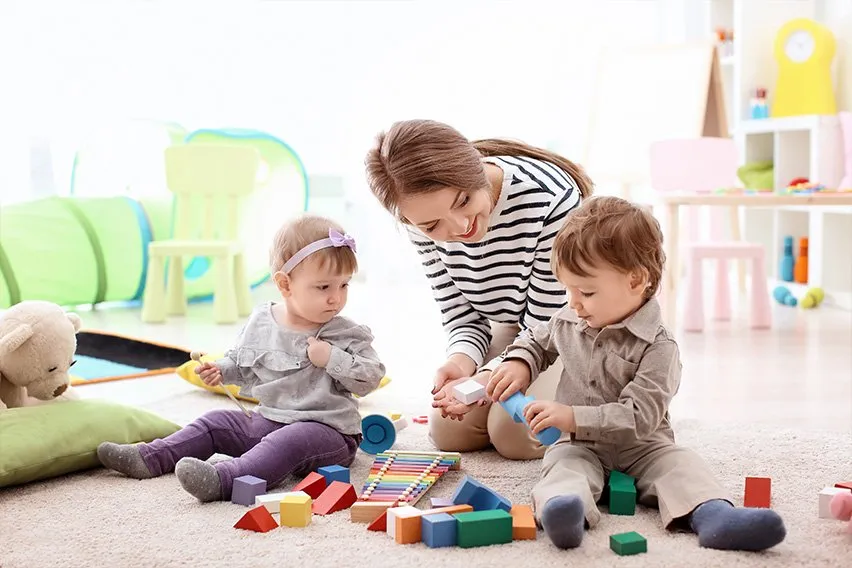6 Steps for Estimating a Painting Job in Australia

A big part of your painting business is creating and submitting estimates for certain jobs. Not only because you want to ensure you have everything you need but you also want to stay within the customers budget. But if you’re just starting a painting business it can be difficult to know where to start.
What should you include? Do you need to account for labour costs and your business markup?
Creating an accurate price estimate will let you stand out from your competition and give you a better opportunity for landing that next painting job. To help, we have put together six steps for you to follow to provide attractive estimates while keeping your business profitable.
FreshBooks has online estimating software that you can use to help you get ahead. It’s simple to use and you can easily generate and send estimates. As well, you can quickly convert them into invoices to send to your customers when the job is complete.
In this article, we’ll cover:
How Much Does a Painter Charge in Australia?
What Does a Painter Usually Charge Per Square Foot?
Is There an Average Hourly Rate for Painters in Australia?
6 Tips to Follow for Estimating Your Next Painting Job in Australia
How Much Does a Painter Charge in Australia?
There isn’t a one-size-fits-all approach to painting jobs in Australia. More complex jobs that require higher skills will cost more and simpler jobs that only require basic painting will cost less. Plus, the location where you’re located will also affect the overall price.
For example, painting jobs in major cities such as Sydney, Brisbane or Melbourne will likely be higher compared to smaller towns such as Childers or Stanthorpe.
That said, most painting jobs in Australia can range anywhere from $35 to $45 per hour which doesn’t include the cost of labour or materials, according to Service Seeking.
It’s also important to recognize that the size of a room, the condition of the walls and the price of paint will all get considered in the overall price.

What Does a Painter Usually Charge Per Square Foot?
According to Hunter Coast Painting, taking into account the overall condition and age of the house, what material it’s made of and the total area to get painted is factored into the price.
For interior painting jobs, you can expect painters to charge between $1 to $3 per square foot. The total price for a room can range anywhere from $250 to $400, according to Service Seeking.
Exterior paint jobs can sometimes be a little more difficult to price per square foot. Variables like the number of levels, the condition of the exterior and what the surface is made of will dictate the price per square foot.
But, exterior painting jobs will usually range from $1 to $6 per square foot. A single-storey house, including fascia boards, gutters and eaves, can start at around $3,000 as a total cost, according to Hunter Coast Painting.
Is There an Average Hourly Rate for Painters in Australia?
Not taking into account the cost of supplies and materials, most professional painters in Australia will charge anywhere from $35 to $45 per hour. However, it’s going to depend on what needs to be painted and whether or not the job is a bit more complex.
Specialized painting services, painting difficult areas and jobs that require extra prep work can cause the hourly rate to increase.
6 Tips to Follow for Estimating Your Next Painting Job in Australia
We’ve put together six steps for you to follow to put together an accurate estimate for your next painting job. They’ll cover everything from labour costs, the cost of materials and supplies and any overhead costs to include, among others.
You’ll have a better opportunity to stay within your customers budget but also earn a profit for your business.
1. Visit the Customer’s House
Before getting into any of the labour costs or the cost of paint, the best thing you can do first is visit the customer’s house. This will give you a better sense of the complete job and it will give you an opportunity to discuss details with the customer. Plus, it’s a great way to ensure nothing unexpected happens once the job starts.
Ask the customer to show you exactly what needs to be painted and give an overview of their expectations. This can also be a great time to discuss the type of paint and the colour they’re looking for.
As well, visiting the customer’s house will let you start to think about how long the job might take and determine some of the materials and supplies needed. Knowing these details as early as possible will let you accurately estimate labour costs.
Make sure you bring a tape measure or a laser measurer to determine the total square footage that needs to get painted, as well.
2. Determine the Price of the Paint Needed
Now that you have visited the customer’s house and discussed some of the job details, you can start to estimate paint costs. The price of paint will vary on a few different factors, including if you need primer, if it’s low sheen or high sheen and whether or not it’s interior or exterior.
According to Hire Trades, one litre of primer can cost around $30 per litre. Low sheen paint will typically start around $35 per litre and high sheen can start around $40 per litre for interior paint.
Exterior paint, on the other hand, is going to depend on the type of surface you’ll be painting over. Weatherproof exterior paint will start anywhere from $20 to $30 per litre. If you need to paint a metal surface, such as a garage door, this paint can range from $40 to $50 a litre.
Since you asked the customer some specific questions when you visited the house, you’ll now have a better idea as to how much paint you’ll need and the total cost.
Let’s say that the customer decided on a low sheen paint for the interior of the house and the paint you’re thinking of getting is $35 per litre. Based on those details, here are a few rough estimates for how much paint you’ll need based on some different sized houses in Australia.
- A 1,500 square foot house: 10 litres of paint = $350
- A 2,000 square foot house: 15 litres of paint = $525
- A 4,000 square foot house: 25 litres of paint = $875
3. Factor in Material and Supply Costs
Every painting job is going to be a little different which means you’re going to need various materials and supplies. Visiting the customer’s house in step one should have given you a pretty good idea of what might be needed and whether extra prep work is required.
For interior houses, knowing the square footage, the condition of the walls and whether or not windows, trim or ceilings also need to get painted is helpful. For exterior jobs, knowing how much roofline needs to get painted and the type of surface is a good place to start.
Here are some typical materials and supplies you can expect to have to include for most painting jobs:
- Primer
- Paint brushes
- Paint rollers
- Drop sheets
- Painters tape
- Caulking
- Sanding paper
- Paint scrapers

4. Determine Labour Costs
This is where you’re going to figure out how many workers you’re going to need and how long the job is going to take. Keep in mind that it’s important to make notes during your site visit if there will be extra prep work or anything that could cause disruptions once the job starts. These can affect the length of time it takes to complete the job.
According to Service Seeking, the average hourly rate of painting jobs in Australia is $40 per hour.
As an example, let’s say that you have determined it will take one day, or 8 working hours, to paint the interior of a 2,000 square foot house and you’ll only need one worker. Based on these details, you can determine the labour costs like this:
8 working hours x $40 per hour = $320 in labour costs
5. Include Your Markup and Overhead Costs
While you always want to do your best to stay within a budget, you also want to ensure your business earns a profit for the work that gets done. This is where you can include your business markup.
It can be common to operate at a 30 per cent margin for new businesses, so a markup of around 50 per cent will ensure you’re not priced too high but still generate a profit, according to Painting Business Pro.
As well, including a certain percentage to cover your overhead costs can also be important. Overhead costs are things that aren’t related to the actual job itself. For example, if you pay rent or utilities for office space, have insurance costs and the cost of fuel to get to job sites are overhead costs.
Incorporating around 20 per cent to cover your overhead costs can be a sufficient place to start.
6. Prepare the Final Estimate
Now that you’ve got everything you need, you can put everything together to create an accurate estimate for your painting job. Be sure to include the cost of paint, labour costs, any supplies and materials, and your markup and overhead costs.
If you want a little bit of assistance with preparing your final estimate if this is your first painting job, using an online estimating calculator can be helpful. Once you’re finished you can send it off to your customer.
Key Takeaways
There can be a lot to consider when putting together an estimate for a painting job. Seeing the house first and understanding exactly what needs to get painted is a great place to start. You can ask the customer any questions and discuss details like the type of paint and the colour they want.
From here, you can start to determine the approximate square footage to help estimate both the cost of paint as well as labour costs. Be sure to also include the cost of supplies and your business markup.
Use the six steps outlined in this guide as a starting point for what to include. Before you know it you’ll be generating accurate estimates, landing more jobs and keeping your business profitable for years to come.
Did you enjoy reading this guide? Head over to our resource hub for more great content!
RELATED ARTICLES

 How to Check PayPal Exchange Rate & Currency Calculator
How to Check PayPal Exchange Rate & Currency Calculator How to Confirm Bank Account on PayPal
How to Confirm Bank Account on PayPal How Much Does a Small Business Pay in Taxes?
How Much Does a Small Business Pay in Taxes? Nanny Tax Deduction: A Complete Guide
Nanny Tax Deduction: A Complete Guide